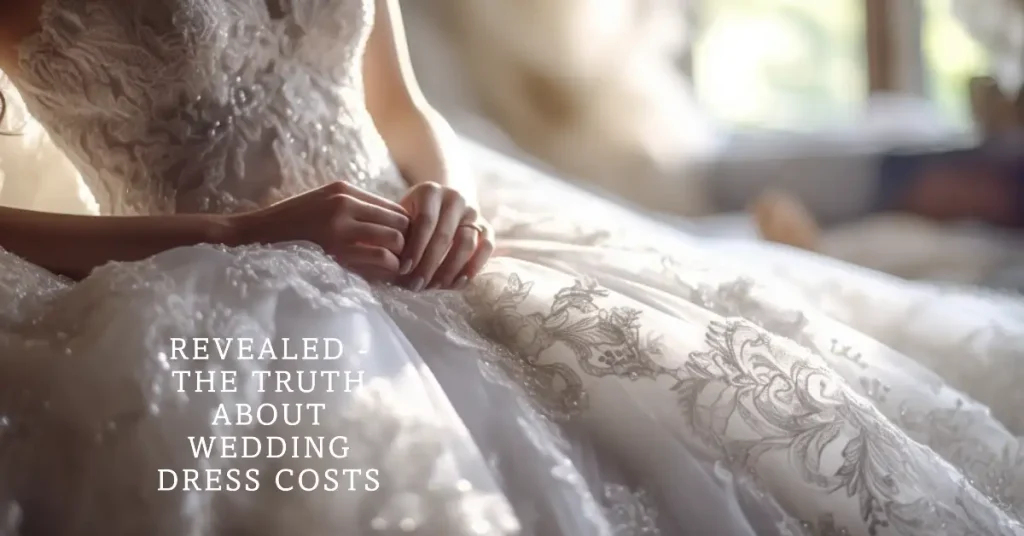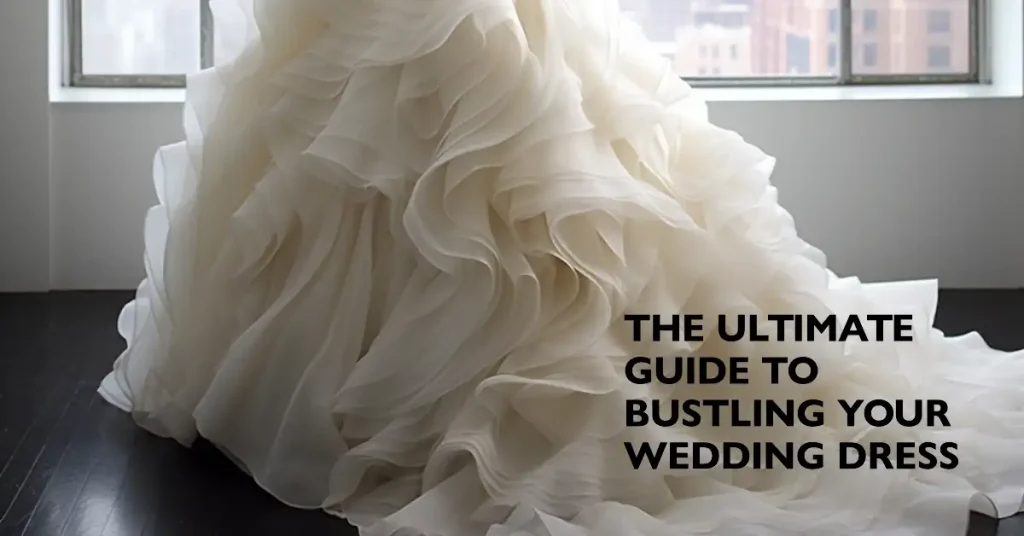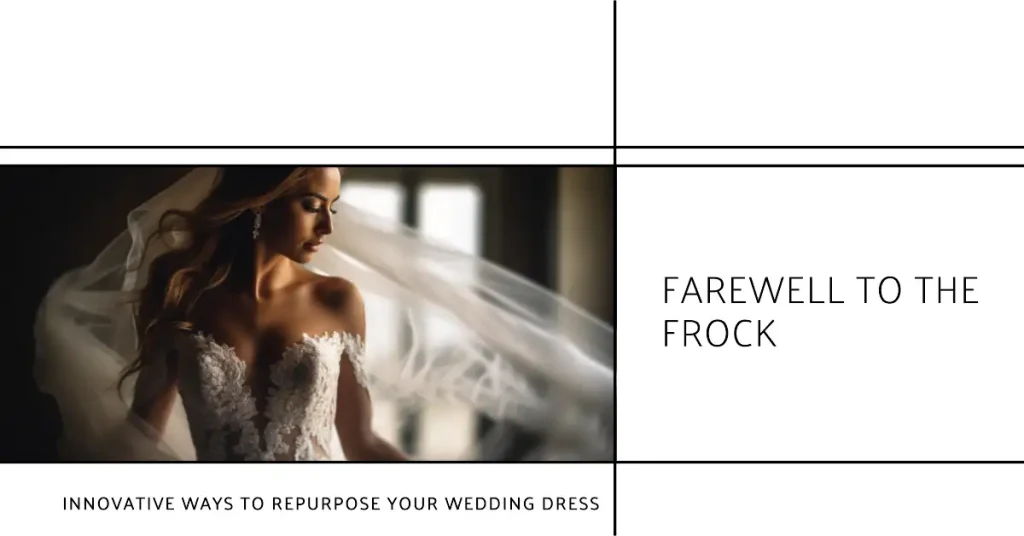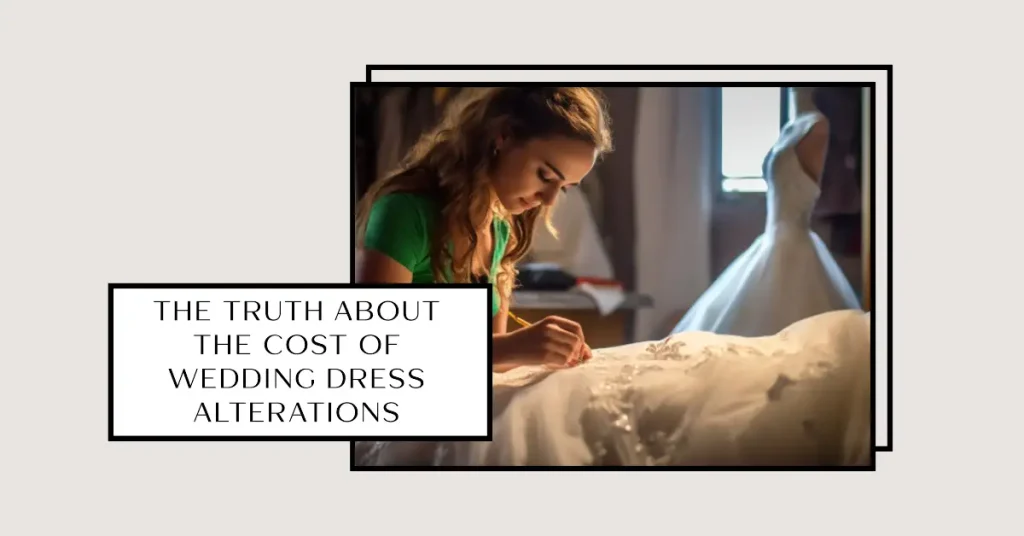Table of Contents
When it comes to weddings, one of the most important decisions a bride must make is selecting her wedding dress. But who traditionally takes on the responsibility of purchasing this iconic gown? In this article, we will explore the topic of who buys the wedding dress, delving into traditional practices as well as modern trends. From parental contributions to buying the dress as a couple, there are many factors to consider when it comes to this important decision.
Key Takeaways:
- Traditionally, who buys the wedding dress varies depending on culture and family traditions.
- Modern trends have seen couples opting for more unconventional approaches, such as the bride purchasing the dress herself or couples shopping for the dress together.
- Cultural and familial customs can also play a role in parental contributions to purchasing the wedding dress.
- For those considering selling their wedding dress, there are several platforms and methods available, from online marketplaces to consignment stores.
- When deciding whether to sell or keep the dress, sentimental value, future use, and practical considerations should all be taken into account.
Traditional Wedding Dress Buyers
In traditional Western culture, the bride’s family typically buys the wedding dress. This includes the bride’s mother and father, or other close family members. In some cases, the groom’s family may also contribute to the purchase.
Similarly, in many Asian cultures, it is customary for the bride’s family to bear the cost of the wedding dress. However, the specific customs vary by country and region. For example, in China, the groom’s family may provide a traditional wedding dress for the bride to wear during the ceremony.
- Carter, Lisa (Author)
- English (Publication Language)
- 107 Pages - 04/06/2024 (Publication Date) - Independently published (Publisher)
Traditional Wedding Dress Buyers in Western Cultures
| Country | Custom |
|---|---|
| United States | Bride’s family pays for the dress |
| United Kingdom | Bride’s family pays for the dress |
| Ireland | Bride’s family pays for the dress |
| France | Bride’s family pays for the dress |
Traditional Wedding Dress Buyers in Asian Cultures
| Country/Region | Custom |
|---|---|
| China | Bride’s family pays for the dress, groom’s family may provide traditional dress |
| India | Bride’s family pays for the dress |
| Japan | Bride’s family pays for the dress |
| Korea | Bride’s family pays for the dress |
These traditional practices are still common today, but modern trends have opened up new possibilities for wedding dress purchases.
Changing Trends in Wedding Dress Purchases
As traditional gender roles continue to evolve, so do the customs surrounding wedding dress purchases. More and more couples are opting for unconventional approaches, such as sharing the cost or the bride purchasing the dress herself.
It’s not uncommon for couples to divide the cost of the wedding dress evenly or include it as part of their overall wedding budget. This practice not only reflects a more egalitarian approach to wedding planning, but it can also relieve financial pressure on the bride’s family.
Another trend that has gained popularity in recent years is the bride purchasing the dress herself. This can be a powerful symbol of independence and self-sufficiency, especially if the bride is paying for the wedding entirely on her own. It can also provide a more personalized experience, as the bride has complete control over the style, fit, and price of the dress.
Same-Sex Couples and Wedding Dress Purchases
The changing trends in wedding dress purchases are also evident within same-sex couples. In these unions, there is no predetermined “bride” or “groom” role, and the decision of who buys the wedding dress can be based on personal preference or practical considerations.
For example, some couples may choose to have one partner purchase both wedding attire outfits, while others may split the cost equally or individually purchase their own garments. The beauty of same-sex weddings is that there is no set script to follow, allowing couples to create their unique traditions that work for them.
Buying the Dress as a Couple
As weddings become more personalized and focused on the couple themselves, the trend of shopping for and purchasing the wedding dress as a couple is gaining popularity. This approach to selecting the perfect gown can be a bonding experience for the future bride and groom, and can symbolize a shared commitment to the wedding planning process.
Couples who choose to buy the wedding dress together often enjoy the opportunity to discuss their preferences and vision for the big day. They can explore different styles and options together, and make decisions based on what they both like instead of relying solely on the bride’s preferences.
While this non-traditional approach may not be for everyone, it can be a meaningful way for couples to take on a shared responsibility in the wedding planning process. Furthermore, it can help to shift the focus away from the bride as the sole center of attention and highlight the importance of the couple’s partnership.
Parental Contributions and Traditions
Parents have traditionally played a significant role in wedding preparations, including purchasing the wedding dress. In some cultures and traditions, it is customary for the bride’s family to cover the cost of the gown.
However, as modern trends emerge, couples are becoming more flexible about who contributes financially. Some parents still offer to pay for the dress as a gift, while others may offer to split the cost with the couple.
It is also common for couples to make decisions about financing the dress based on their personal financial situation. If the couple is paying for the wedding themselves, they may opt to set a budget for the dress and make payments over time.
Ultimately, the decision about parental contributions to wedding dress purchases depends on the individual family’s financial situation and cultural traditions.
Wedding Dress Budgeting and Financing
When it comes to buying a wedding dress, budgeting is key. It’s important to determine how much you can realistically afford to spend, taking into account other wedding-related expenses. Here are some tips for budgeting and financing your dream dress:
Determine Your Budget
Before you start shopping, decide on a budget for your dress. This will help you narrow down your options and prevent you from overspending. Be honest with yourself about what you can afford, and don’t forget to factor in alterations, accessories, and cleaning fees.
Find Affordable Options
There are plenty of beautiful wedding dresses available at a range of price points. Consider looking at off-the-rack options or sample sales, which can offer deep discounts. You can also browse second-hand options, either online or at consignment shops, to find a dress at a lower price.
Explore Financing Options
If you need a little extra help affording your dream dress, look into financing options. Some bridal stores offer payment plans or financing options, allowing you to pay off your dress over time. Just be sure to read the fine print and understand the interest rates and fees involved.
With these tips in mind, you can find the perfect wedding dress without breaking the bank. Remember to stick to your budget and consider all of your options to make the most of your wedding dress budget.
Selling Your Wedding Dress
If you’ve decided to sell your wedding dress after the big day, you’re not alone. Many brides choose to part with their gown for various reasons, such as recouping some of the costs or making room in their closet. Here are some tips on how to sell your wedding dress successfully:
Consider the Reasons for Selling
Before putting your dress up for sale, take some time to consider your motives. Are you selling it for sentimental reasons, or do you need the money? Will you regret parting with it in the future? Be sure you’ve thought through your decision before proceeding.
Take High-Quality Photos
When creating a listing for your dress, make sure to include clear, well-lit photos that showcase the dress’s details and condition. A combination of full-length and close-up shots can help potential buyers envision themselves in the gown.
Write a Compelling Description
Along with your photos, you’ll want to provide a thorough description of the dress. Include information such as the designer, style name, size, and any custom alterations made. Be honest about any flaws or damage, as this will help build trust with potential buyers.
Choose the Right Platform
Consider where you want to sell your dress. Online marketplaces like Stillwhite or Nearly Newlywed specialize in preowned wedding dresses, while social media platforms like Facebook Marketplace or Instagram can also be effective. You could also consider local consignment or bridal shops as an option.
Price it Competitively
Research the prices of similar dresses on the platform you’ve chosen and price yours competitively. Keep in mind that potential buyers will likely negotiate, so leaving some wiggle room in the price can help facilitate a sale.
Be Prepared to Negotiate
Be prepared to negotiate with potential buyers, especially if you’re selling the dress on your own. Decide ahead of time what your bottom-line price is, but also be open to compromise.
Reaching Out to Wedding Dress Buyers
Once you’ve made the decision to sell your wedding dress, the next step is to find potential buyers. There are many ways to reach out to potential buyers, but it’s important to make sure your listing is as attractive as possible. Here are some tips for effectively reaching out to wedding dress buyers:
Creating an Appealing Listing
The first step in reaching out to potential buyers is to create an appealing listing. This means taking the time to write a detailed description of your dress and including high-quality photos that show off its unique features. Be sure to highlight any special details, such as beading or embroidery, and mention the designer and original retail price if possible.
Taking Attractive Photos
The photos you include with your listing can be the difference between attracting interested buyers and getting ignored. Make sure to take clear, well-lit photos of your dress from multiple angles, including the front, back, and sides. If there are any particular features you want to highlight, such as a train or lace overlay, make sure to include close-up shots as well.
Providing Accurate Descriptions
When creating your listing, it’s important to provide accurate descriptions of your dress. This includes information about the size, color, and condition of the dress, as well as any alterations that have been made. Be honest about any flaws or damage, as this will help potential buyers make an informed decision.
Tip: Consider having your dress professionally cleaned and pressed before taking photos and creating your listing. This will make your dress look as good as new and help it stand out to potential buyers.
Finding the Right Place to Sell Your Wedding Dress
When it comes to selling your wedding dress, there are multiple options available. Each option has its pros and cons, so it’s important to weigh them carefully before making a decision.
Online marketplaces: Online marketplaces like eBay, Craigslist, and Facebook Marketplace allow you to reach a large audience of potential buyers. However, you will likely have to handle the shipping process yourself, and there is always the risk of scams or fraudulent buyers.
Wedding dress specific websites: Websites like Stillwhite, PreOwnedWeddingDresses, and Tradesy specialize in selling preowned wedding gowns. They often have a larger pool of interested buyers, and some sites even offer seller protection. However, they may charge a commission fee for each sale.
Consignment stores: Consignment stores may offer a more personalized experience, as they can help you determine the value of your dress and handle the selling process for you. However, they typically take a larger percentage of the sale price as commission.
Bridal expos: If you have a local bridal expo, it may be worth considering renting a booth to sell your dress. This allows you to connect with potential buyers in person and answer any questions they may have. However, this method may be more time-consuming and costly.
Ultimately, the right place to sell your wedding dress depends on your personal preferences and the specific details of your dress. Consider the level of control you want over the selling process, the commission fees you’re willing to pay, and the type of buyers you want to target.
Maximizing the Value of Your Preowned Wedding Dress
When selling a preowned wedding dress, it’s important to present it in the best possible light to attract potential buyers and maximize its value. Here are some tips to help:
Preserve the Dress
Before selling your dress, make sure it’s properly preserved to maintain its quality and appearance. This includes cleaning it thoroughly to remove any stains or dirt and storing it in a cool, dry place away from direct sunlight to prevent yellowing or discoloration.
Avoid Significant Alterations
While it may be tempting to alter the dress to fit a new buyer’s specific needs, significant alterations can make the dress less appealing to potential buyers and reduce its resale value. Stick to minor alterations, such as adjusting the length or adding straps, and avoid making major changes to the design or style.
Take High-Quality Photos
When creating a listing for your dress, make sure to take high-quality photos that showcase its beauty and unique features. Use natural lighting and avoid using filters or heavy editing that may alter the true color or texture of the dress.
Provide Accurate Descriptions
It’s important to provide potential buyers with accurate and detailed descriptions of your dress to help them make an informed decision. Include information about the designer, size, material, and any unique features or embellishments.
Consider Professional Selling Platforms
While there are several options for selling a preowned wedding dress, professional selling platforms such as specialized bridal dress resale websites or consignment shops can offer greater visibility and reach a wider audience. These platforms often charge a commission or fee, but may ultimately result in a higher selling price.
Be Realistic About Pricing
When setting a price for your preowned wedding dress, it’s important to be realistic and consider its age, condition, and original retail value. Research similar dresses on the market and aim to price yours competitively while still ensuring a fair return on your investment.
Making the Decision to Sell or Keep the Wedding Dress
Deciding whether to sell or keep the wedding dress can be a difficult decision for many brides. While some may hold onto their gown for sentimental reasons or future use, others may prefer to part with it and recoup some of the cost. Here are some factors to consider when making this choice:
- Sentimental value: Does the dress hold significant sentimental value for you? Are there memories attached to it that you want to preserve? If so, it may be worth keeping the gown.
- Future use: Do you anticipate using the gown again for an anniversary or another event? If so, it may be worth holding onto the dress.
- Practical considerations: Do you have the storage space to keep the dress? Will it require maintenance or preservation to maintain its condition? These practical considerations should also be factored into your decision.
Ultimately, the decision to sell or keep the wedding dress is a personal one that should be based on your own values, needs, and preferences. Whatever you choose, make sure it is a decision that you are comfortable with and that aligns with your own priorities for the gown.
Conclusion
When it comes to buying the wedding dress, traditions and modern trends have evolved to offer various options for couples and their families. While in the past, the bride’s family or the groom was expected to foot the bill, modern times have opened up new possibilities and expanded the roles of buyers.
Couples can choose to share the responsibility of purchasing the dress, or even go shopping together to symbolize their commitment to the wedding planning process. Parents can also contribute to the purchase, with cultural and familial customs often playing a role in this decision.
Despite the many options available, selling preowned wedding dresses has become increasingly popular. By listing their dresses on various platforms, brides can recoup some of their expenses and help others looking for a more affordable option. By following some simple tips, such as presenting an appealing listing and maximizing the value of the dress, sellers can ensure they get the most value for their gown.
Ultimately, whether to sell or keep the wedding dress will depend on various factors, ranging from sentimental value to practical considerations. By weighing all options, individuals can confidently make an informed decision that aligns with their preferences and experiences.
FAQ
Q: Who traditionally buys the wedding dress?
A: Traditionally, the bride’s family is responsible for purchasing the wedding dress.
Q: How have modern trends impacted wedding dress purchases?
A: Modern trends have led to more diverse practices, with couples sharing the cost or the bride purchasing the dress herself.
Q: Is it common for couples to buy the wedding dress together?
A: Yes, an emerging trend involves couples shopping for and purchasing the wedding dress together.
Q: What role do parents play in contributing to wedding dress purchases?
A: Parents may contribute to wedding dress purchases based on cultural and familial customs, with some traditions involving parents paying for the dress.
Q: How can one budget and finance the wedding dress?
A: Practical advice on budgeting and financing the wedding dress includes determining a budget, finding affordable options, and exploring financing options if needed.
Q: How can someone sell their wedding dress?
A: After the wedding, individuals can sell their wedding dress through popular platforms and methods for selling preowned wedding gowns.
Q: How can potential wedding dress buyers be reached?
A: Tips on reaching out to potential wedding dress buyers include creating an appealing listing, taking attractive photos, and providing accurate descriptions.
Q: Where can one sell their wedding dress?
A: Different platforms and venues where individuals can sell their wedding dress include online marketplaces, consignment stores, and other options.
Q: How can the value of a preowned wedding dress be maximized?
A: Tips on maximizing the value of a preowned wedding dress include preservation, professional cleaning, and avoiding alterations that may limit marketability.
Q: Should one sell or keep their wedding dress?
A: The decision to sell or keep a wedding dress depends on factors such as sentimental value, future use, and practical considerations.






